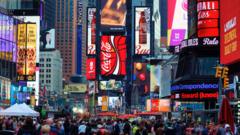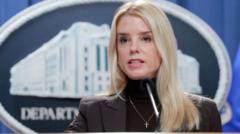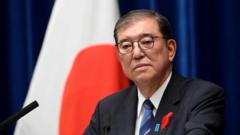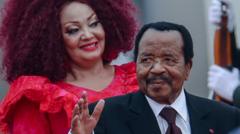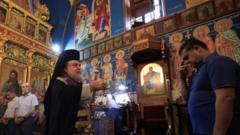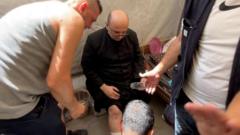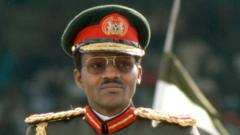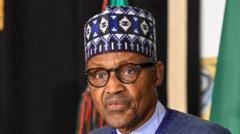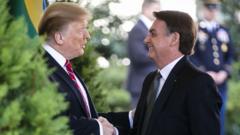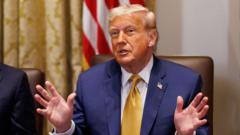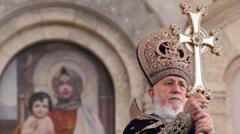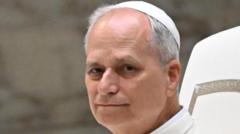The papal conclave has commenced in Vatican City, marking a historic moment as 133 voting cardinals convene to select a successor to Pope Francis, who passed away just over two weeks ago. This conclave, the first in over a decade, arrives at a critical juncture for the Church, grappling with internal divisions and public trust, as well as the shadow of recent scandals and financial woes.
Papal Conclave Begins Amidst Turmoil in Catholic Church

Papal Conclave Begins Amidst Turmoil in Catholic Church
As cardinals gather to elect a new pope, tensions rise over the future direction of the Catholic Church.
On May 7, 2025, cardinals participated in a solemn Mass at St. Peter’s Basilica, asking for divine guidance before entering the Sistine Chapel for their secret voting. It was emphasized that secrecy is paramount during the election process, which could involve multiple rounds of voting until a two-thirds majority is achieved. The composition of the voting cardinals has shifted significantly under Pope Francis; many are meeting each other for the first time, reflecting a diverse range of ideologies – from conservative to progressive.
Amid rumors of potential successors, Cardinal Pietro Parolin, Italy’s top diplomat in the Vatican, alongside Cardinal Luis Antonio Tagle from the Philippines, emerge as primary contenders, each embodying distinct visions for the Church's future. The outcome of this conclave is being interpreted as a referendum on Francis's legacy: whether the electors will continue on his path of inclusion and modernity or revert to more traditional stances.
Divisions persist within the Church, particularly regarding issues related to inclusion, financial transparency, and the handling of previous sex abuse scandals. As the candidates and outcomes remain unpredictable, signal smoke ascending from the Sistine Chapel will inform the world of the cardinals' decisions – a moment that will resonate deeply within and beyond the walls of the Vatican, drawing attention from around the globe.
As the conclave unfolds, the cardinals reflect on their choices, each aware of the monumental responsibility they shoulder at this critical moment in the Church's history. The quest for a new leader goes beyond a mere election; it signifies whether the Catholic Church will adapt to the evolving landscape of faith or retreat into its past traditions.
Amid rumors of potential successors, Cardinal Pietro Parolin, Italy’s top diplomat in the Vatican, alongside Cardinal Luis Antonio Tagle from the Philippines, emerge as primary contenders, each embodying distinct visions for the Church's future. The outcome of this conclave is being interpreted as a referendum on Francis's legacy: whether the electors will continue on his path of inclusion and modernity or revert to more traditional stances.
Divisions persist within the Church, particularly regarding issues related to inclusion, financial transparency, and the handling of previous sex abuse scandals. As the candidates and outcomes remain unpredictable, signal smoke ascending from the Sistine Chapel will inform the world of the cardinals' decisions – a moment that will resonate deeply within and beyond the walls of the Vatican, drawing attention from around the globe.
As the conclave unfolds, the cardinals reflect on their choices, each aware of the monumental responsibility they shoulder at this critical moment in the Church's history. The quest for a new leader goes beyond a mere election; it signifies whether the Catholic Church will adapt to the evolving landscape of faith or retreat into its past traditions.

